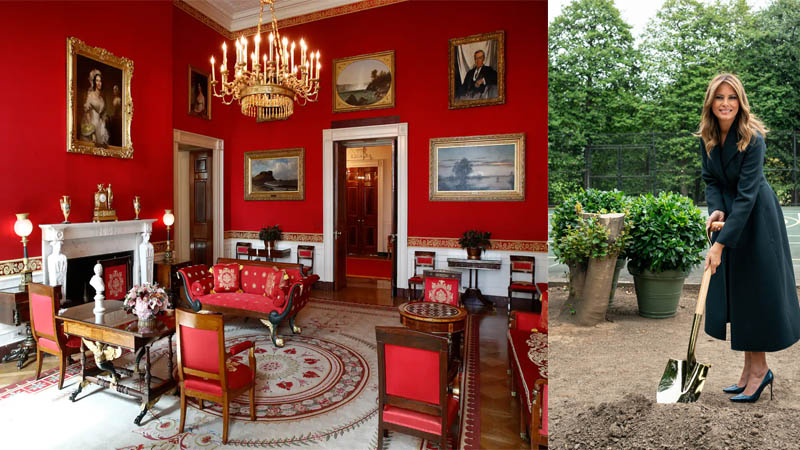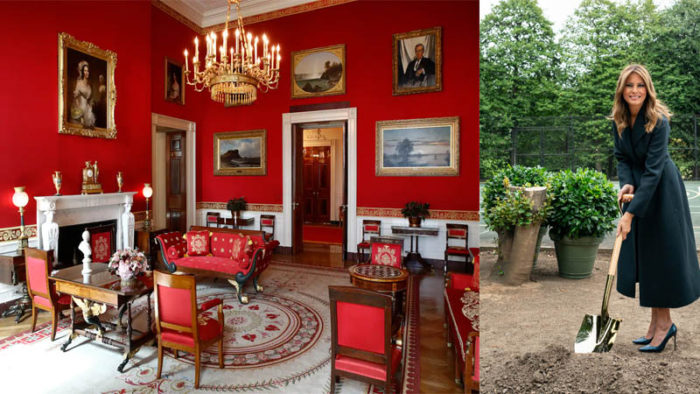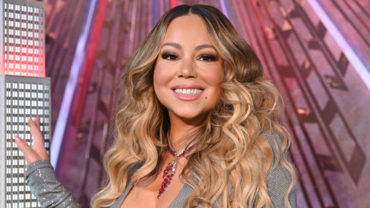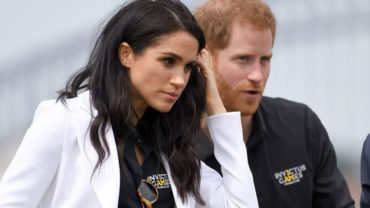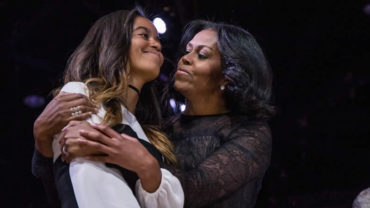“From the Tennis Pavilion to the Rose Garden, Mrs. Trump worked on a variety of restoration projects during her time as first lady,” the office of Melania Trump said in a statement about her White House enhancements. “She is passionate about the historic preservation of the White House and its grounds, ensuring history and beauty are preserved for generations to come.”
Given the covid-19 pandemic, her strained relations with the press and her low profile, though, her design projects didn’t often make headlines.
“Jackie Kennedy is the one that Melania modeled herself after,” says Kate Andersen Brower, a presidential historian who has written five books about the White House, including “First Women.” “But I think with her background as a model and in the fashion industry in New York, she was more concerned with her own appearance than with opening up the house.”
The redo of the iconic Rose Garden raised a few eyebrows with traditionalists who were not happy about the removal of crab apple trees that were included in the original design by gardener and landscape designer Bunny Mellon.
There was also chatter about the revamped bowling alley’s flashy new bowling balls, which were embossed with “The President’s House.” Then there were the tapes that revealed her disdain for having to plan the annual holiday decorations.
While first ladies Laura Bush and Michelle Obama shared their White House interiors in cover spreads in Architectural Digest before leaving office, there was no AD story for Melania Trump.
Her New York designer, Tham Kannalikham, who once worked for Ralph Lauren, repeatedly declined to be interviewed about working for the Trumps in the private quarters or elsewhere.
“I would be delighted to speak with you at some point in the future regarding my time working on the interiors of the White House with first lady Melania Trump. However, at the moment I would like to take some time to reflect on the incredible journey that I was so fortunate to be a part of,” Kannalikham wrote in an email.
Stephanie Winston Wolkoff’s 2020 memoir “Melania and Me” dished on a few decorating details, including Trump’s love of Farrow & Ball’s Middleton Pink paint, which she used in her office, and her insistence on new plumbing fixtures. CNN reported that Melania Trump was said to be “toying with writing a photo-centric coffee table book about White House hospitality history, or one perhaps centered on the design projects she has completed while first lady” and that just before the Trumps moved out of the White House, professional photos were being taken of rugs and other decorative objects.
A source familiar with the restoration projects had this comment on a possible upcoming book: “Mrs. Trump has many different ideas, and it will take time to establish them. No matter what she decides to do, it will be done with quality and passion.”
Changes in White House public spaces are made in consultation with the White House curator and chief usher and an advisory group of specialists, the Committee for the Preservation of the White House. The committee is charged with maintaining the rooms’ museum character and adding decorative and fine arts. The first lady traditionally acts as honorary chairwoman of the committee.
The majority of conservation work, preservation and acquisition of new items is funded by the White House Historical Association, a private nonprofit educational institution founded in 1961 by Jacqueline Kennedy to care for and preserve the White House. General upkeep budgets come from other sources, including congressional appropriations, the General Services Administration and the National Park Service.
First ladies handle design matters in different ways. Pat Nixon acquired many antiques, while Rosalynn Carter added to the art collection, Hillary Clinton restored the Blue Room and Laura Bush overhauled the Lincoln Bedroom.
“For some first ladies, historic preservation is a personal interest. Others think of it as part of their traditional role and responsibilities,” says Betty Monkman, former White House curator. “Most first ladies are very supportive and they want to preserve the house and make it presentable for entertaining and for the American public.”
“Melania Trump primarily focused on historic preservation and caring for the beauty and historical elements of the spaces,” says Stewart McLaurin, the White House Historical Association’s president. “One thing that struck me early on, she always wanted to know what others had done before her, what was customary and traditional. Then she added her own flair or personal input to it.”
McLaurin says the association usually funds about $1 to $2 million worth of White House work per year. They paid for about a dozen projects during the Trump years, including:
● Elevator refurbishment. The small elevator to the private quarters was redone, including refinishing and replacing wood and brass fixtures and updating lighting. The cost: $100,000. “This is where the President and first lady bring in heads of state to come up to go to the residence. It was kind of dingy and dark before. It looked like something in the back of the old Woodies department store. It really needed an update,” McLaurin says.
● Antique chair. A rare 1817 chair, one of the original 24 designed by William King of Georgetown and purchased by President James Monroe, was bought and restored. The cost: $85,000.
● Diplomatic Reception Room rug. The Diplomatic Reception Room, where dignitaries are often welcomed, gets a lot of foot traffic. The rug there that featured 50 state seals around the border was looking worn. Melania Trump helped design a new one, made by Stark Carpet, incorporating the 5o state flowers. The cost: $200,000.
● Doors. About 30 wooden doors were professionally refinished and doorknobs were polished. The cost: $90,000. “This was not a glamorous project,” McLaurin says. “But it was necessary to keep the house looking at its best.”
● Red Room fabric replacement. Years of sunlight had faded the iconic crimson Scalamandré silk walls in the Red Room. McLaurin says, “The entire room was reupholstered to restore the vibrancy of the original red.” The furniture was recovered in red and gold silk. The cost: about $300,000.
● Upholstery and gilding of the Bellangé Suite. Pierre-Antoine Bellangé in Paris made 53 pieces of furniture in 1817 for what is now the Blue Room. In 1860, nearly all were sold at auction. Jacqueline Kennedy brought some back; since then, others have been added and some replicas have been made. Restoration of the current 21 pieces began during the Obama years and was finished in 2018. The cost: $800,000.
● Wall clock. A clock hangs above the door leading to the renovated elevator. The numbers and lettering were done by White House calligraphers and the center eagle is inspired by the James Monroe china. The piece was commissioned from the Chelsea Clock Company, founded in 1897 in Chelsea, Mass. The cost: $10,000.
● Sculpture by Isamu Noguchi. Noguchi’s 1962 bronze sculpture “Floor Frame” was selected by Melania Trump as the first work of art by an Asian American artist in the White House collection. It was installed in the Rose Garden in November 2020. The cost: $200,000.
Melania Trump’s largest project was probably the renovation of the Rose Garden, which included replacement of old plantings and the installation of new limestone paths and upgraded drainage systems. It was paid for with private funds. The tennis pavilion was inspired by White House architecture. The construction was done in partnership with the Trust for the National Mall and the National Park Service and funded by private donations. The tab for the bowling alley redo was paid by the Bowling Proprietors’ Association of America.
Melania Trump declined to comment about any of the work in the private quarters. The source familiar with the restoration projects said, “Mrs. Trump preserved, restored, and enhanced many of the rooms in the private residence from the Dining Room, Yellow Oval Family Room, and the Queens’ Bedroom and Bathroom. All of the designs were carefully researched and the best craftsmen were hired to complete the work.”

